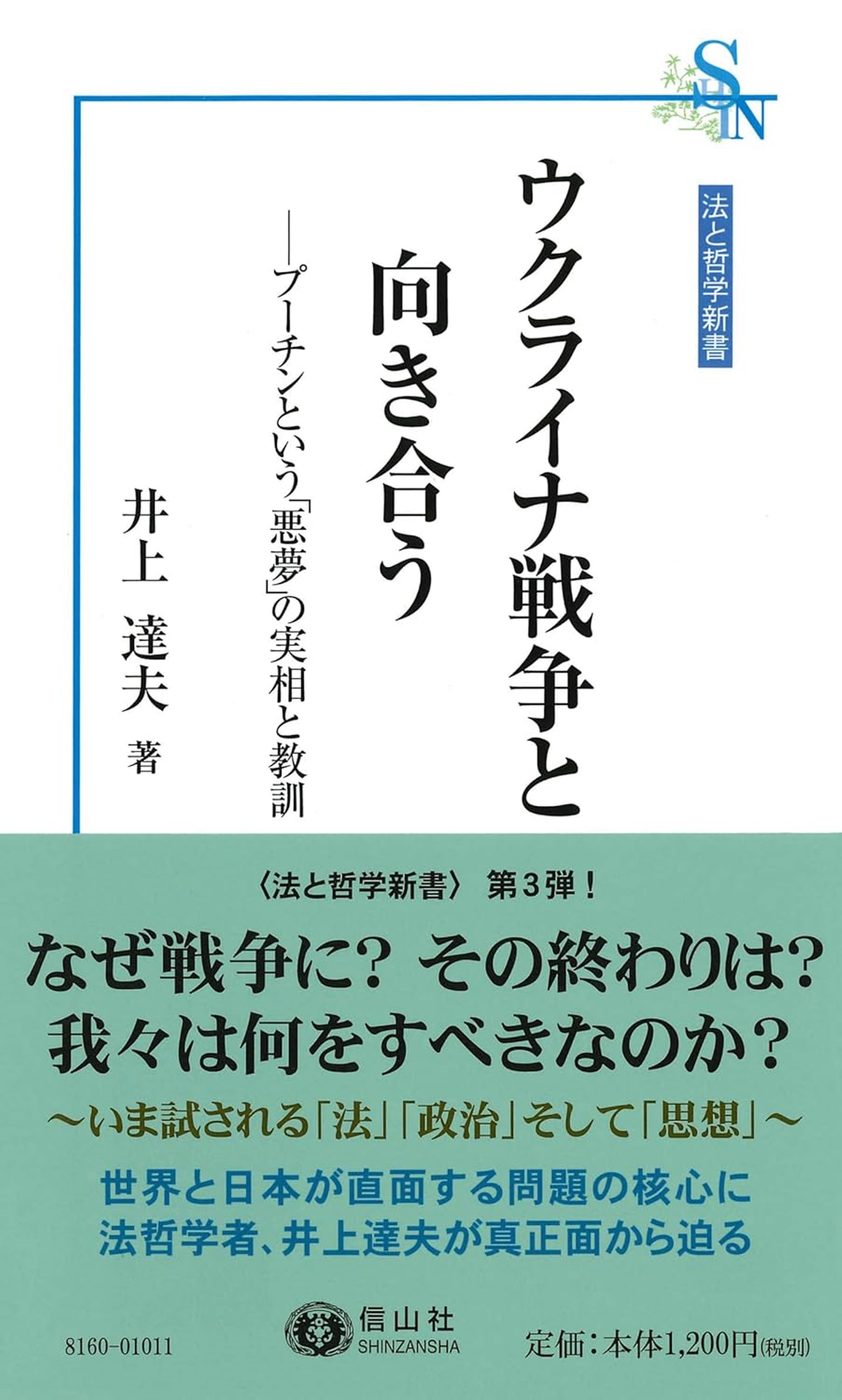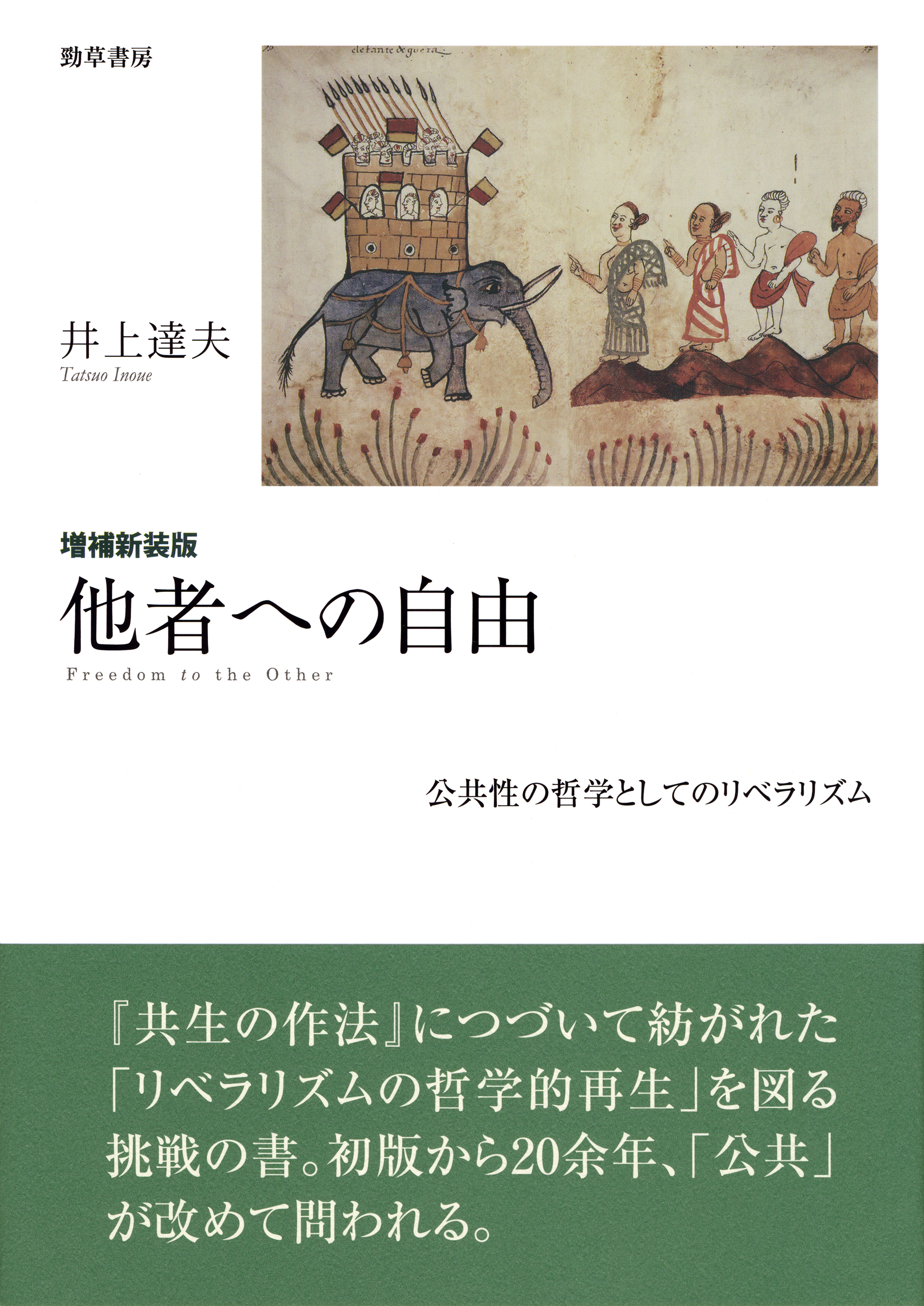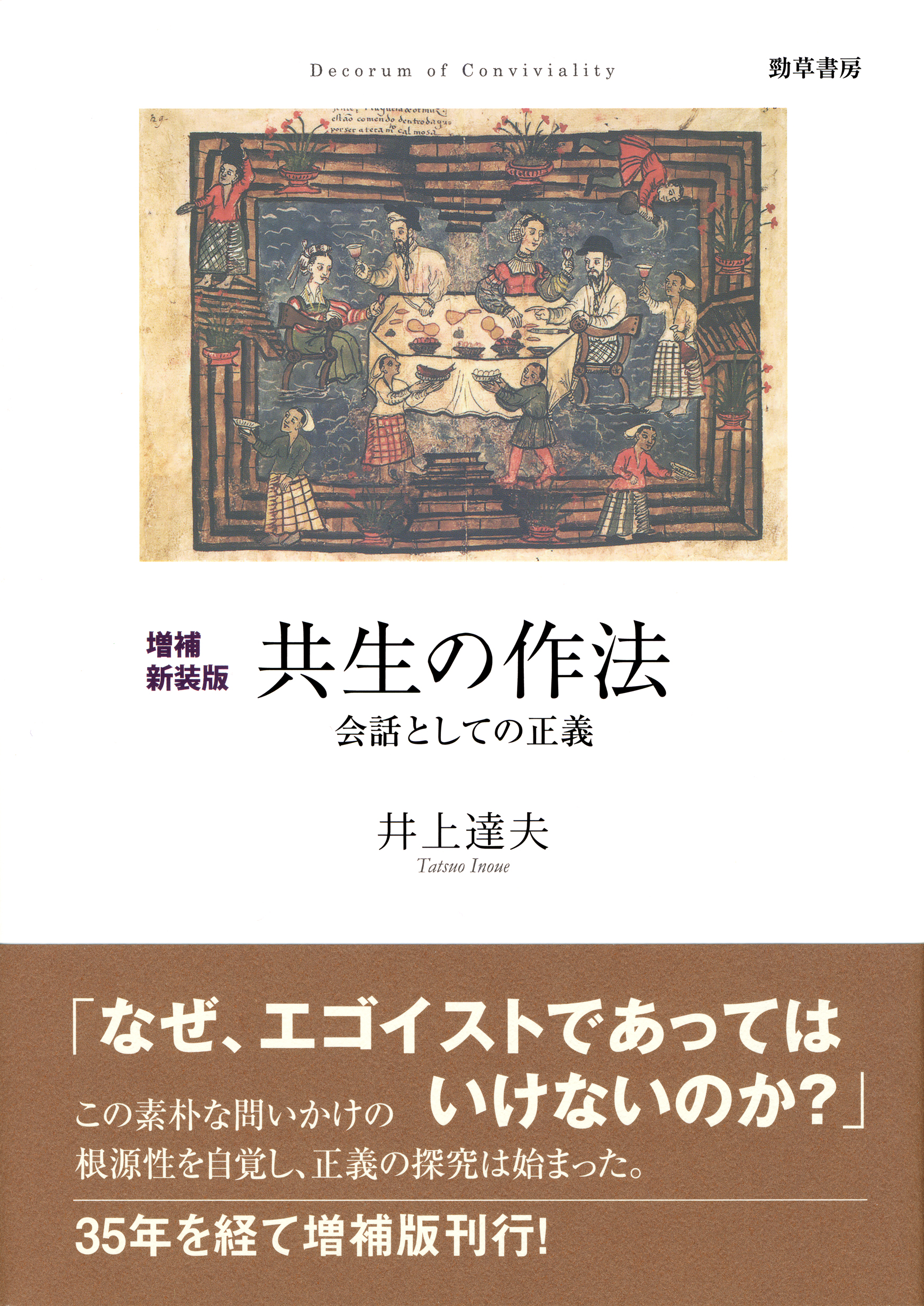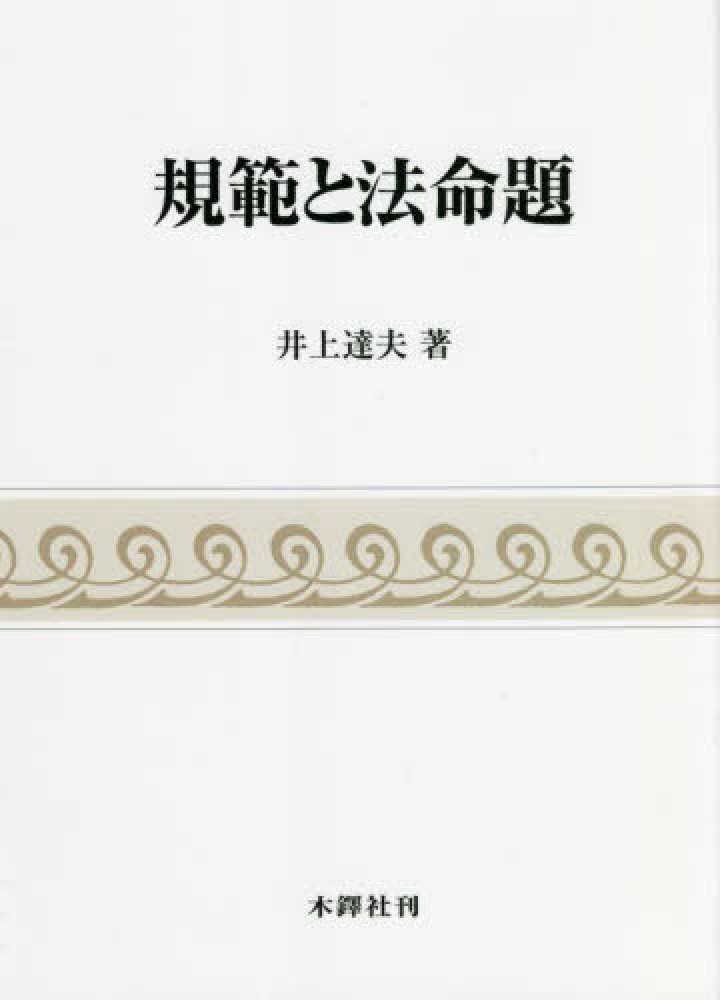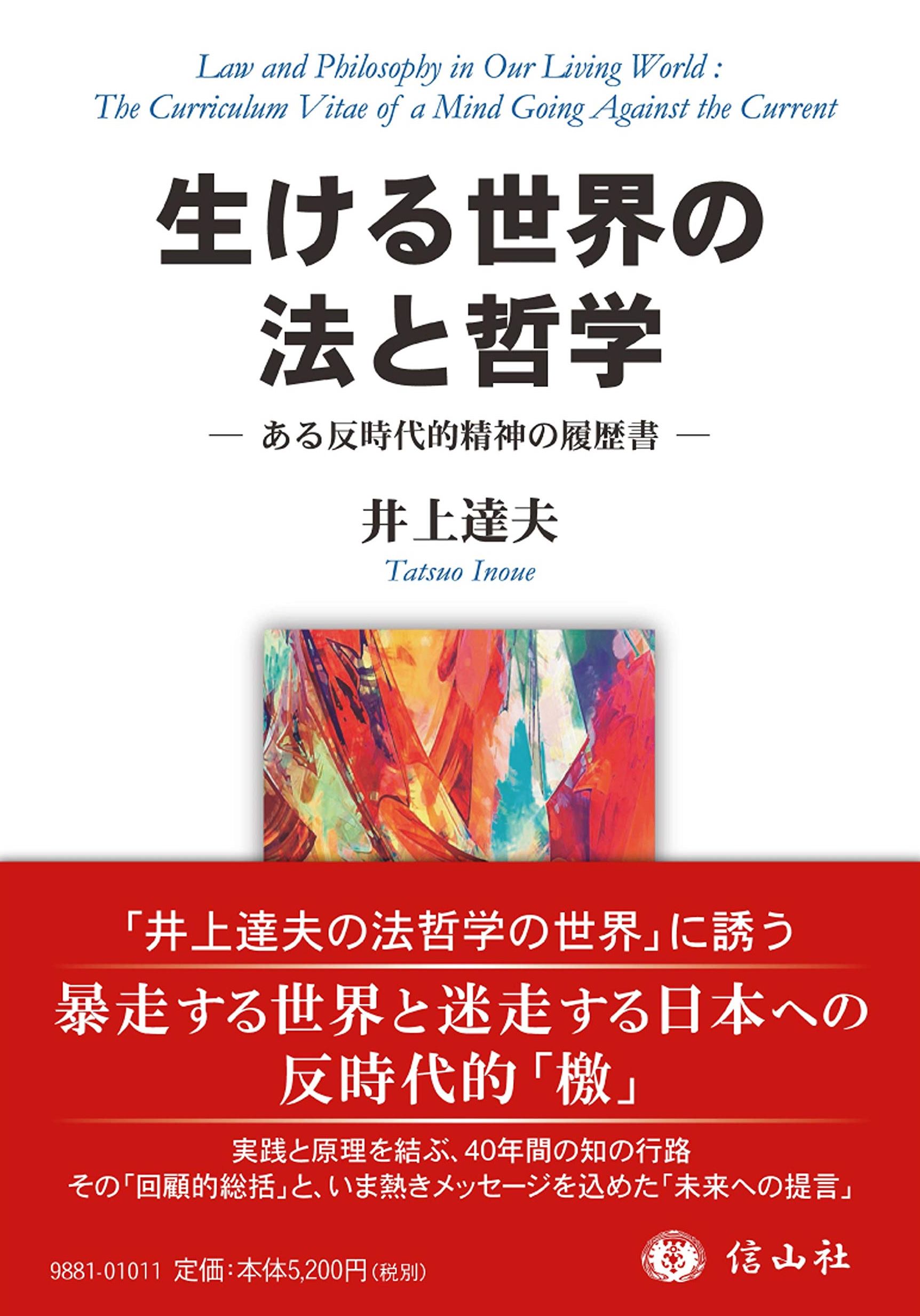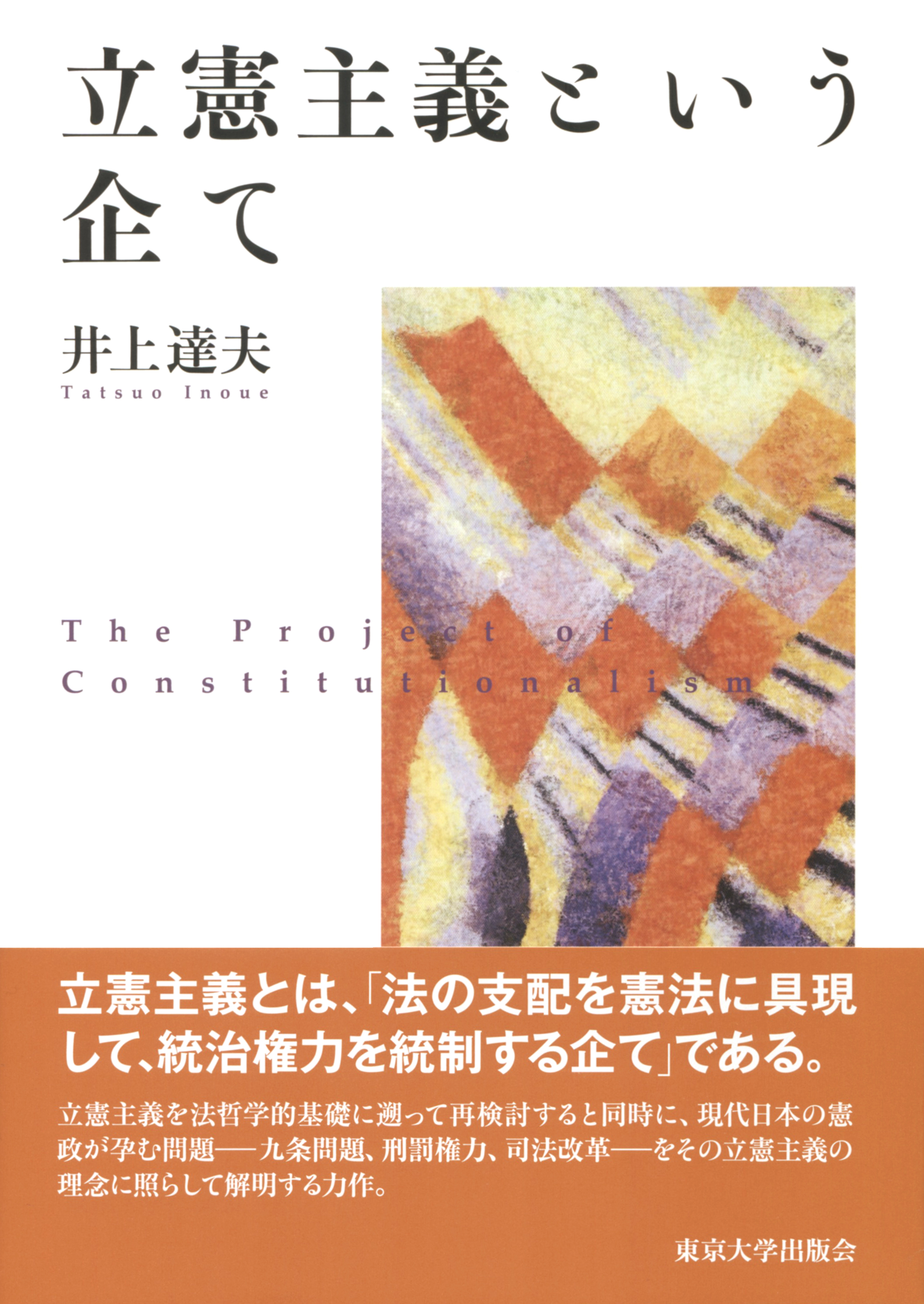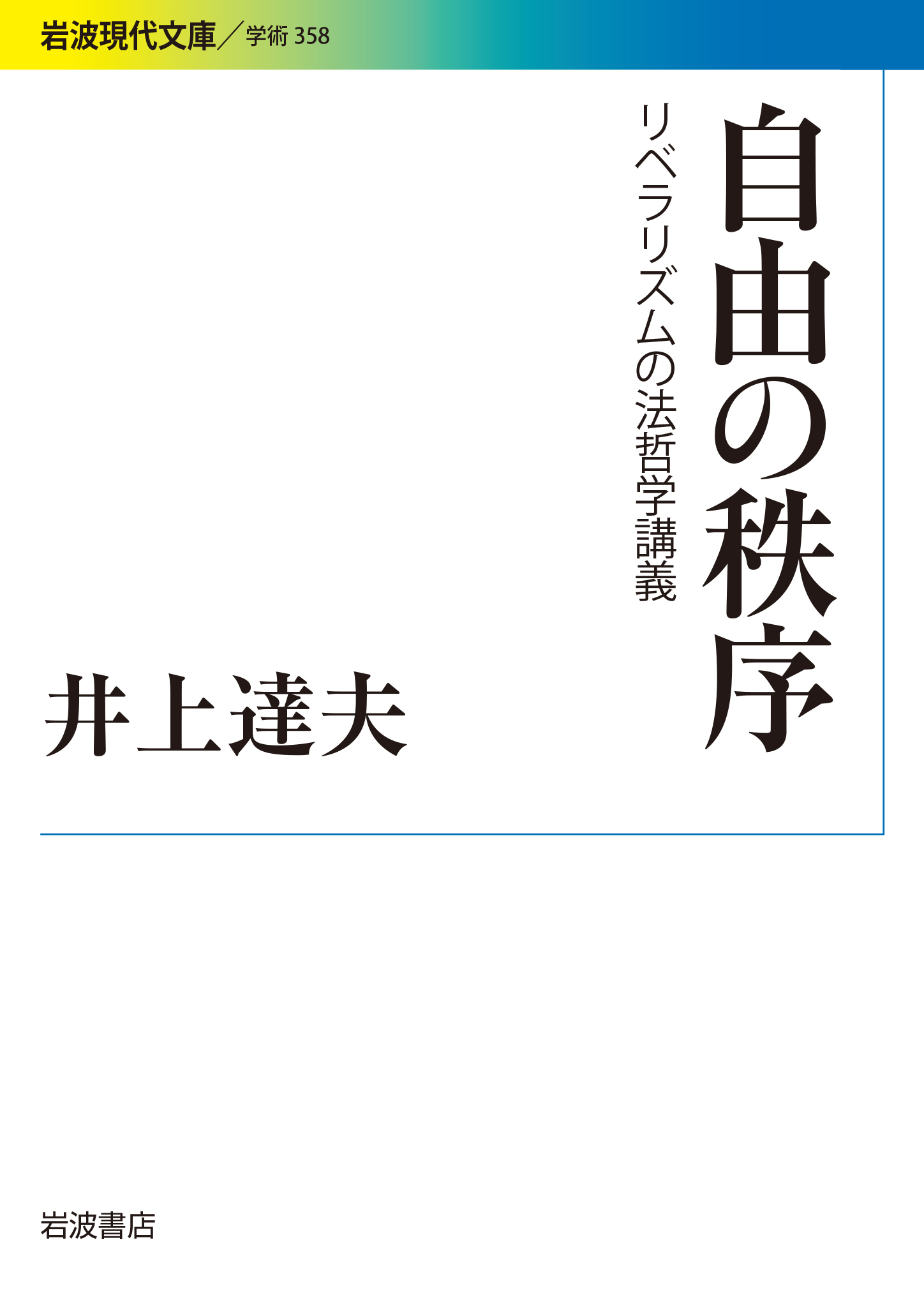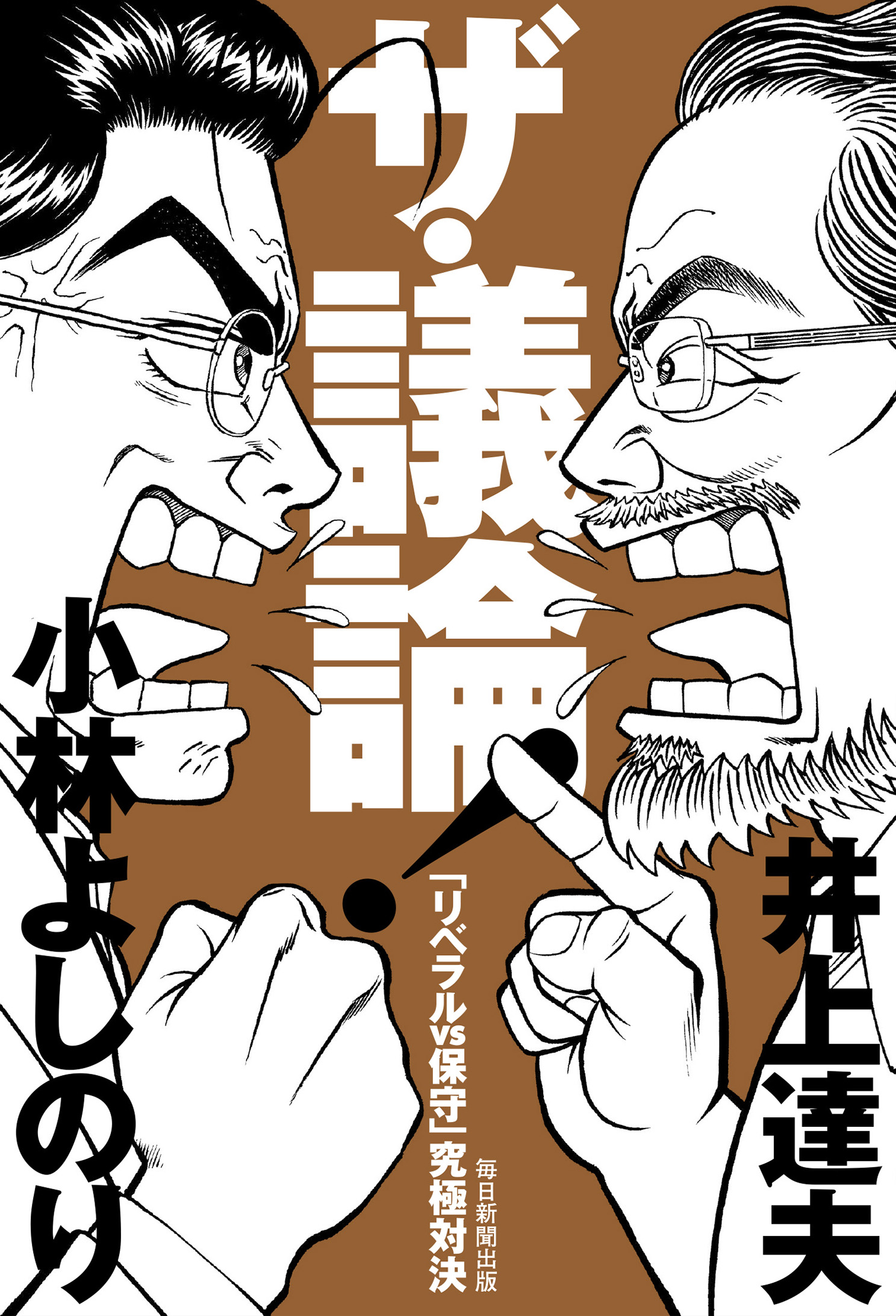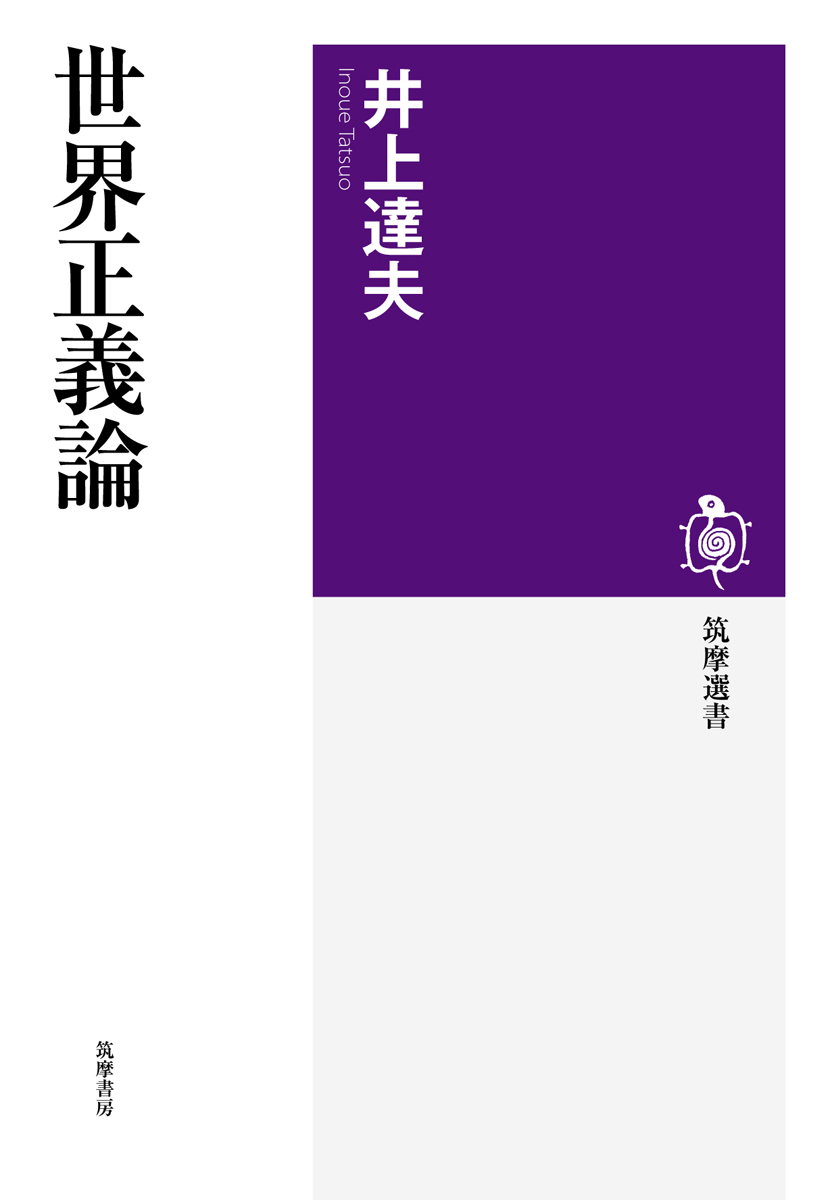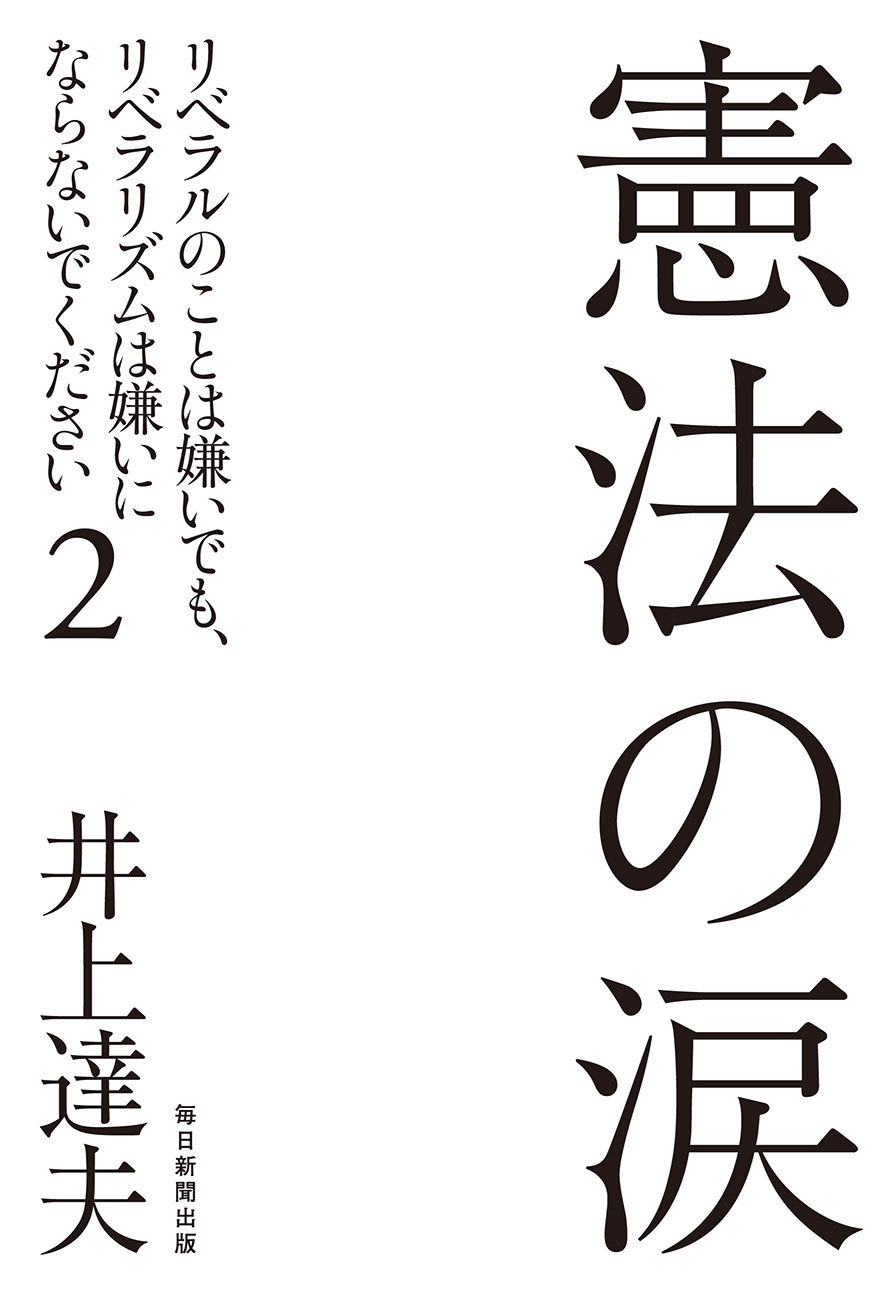
Title
Kenpo no Namida (The Tears of the Constitution: Even if You Hate Liberals, Don’t Hate Liberalism 2)
Size
168 pages, 127x188mm
Language
Japanese
Released
March 16, 2016
ISBN
978-4-620-32375-6
Published by
Mainichi Shimbun Publishing Inc.
Book Info
See Book Availability at Library
Japanese Page
Having worked exclusively in academia, I feared the increasing rightward drift in Japan leading to a dislike of liberals, which exceeds liberal bashing by the online right wing and spreads even to the general public. In response, I published the general interest Even if You Hate Liberals, Don’t Hate Liberalism – An Introduction to the Philosophy of Law by Tatsuo Inoue in 2015 I criticize both the perversions of the right wing and the deceit of self-proclaimed liberals in philosophically redefining liberalism to a certain extent, and I express this intent in regard to actual politics. Although this book does contain some highly academic content, I worked to make the publication easier to understand by adopting an interview style with me answering questions from the editor. There was a larger than expected response to this work, with my views on the issue of constitutional revision being of particularly significant interest. As a result, I published this sequel with constitutional issues as the main topic. The content of the book is summarized in the following hypothetical dialogue presented as the epigraph of the first chapter, which explains the meaning of the title The Tears of the Constitution.
The Constitution of Japan is crying.
--Why is this so? Is it being “bullied” by revisionist attempts to modify Article 96 or the illicit practice of mutilating Article 9 by an interpretive maneuver?
Yes, that’s tough. But there is a more painful reason.
--What could it be?
The Constitution has been mercilessly betrayed by the Gokennha (constitution-protectionists), who claim to be sworn to uphold its Article 9.
Clause 2 of Article 9 of the Constitution explicitly prohibits the maintenance of “land, sea and air forces as well as other war potential.” However, not only the Abe administration, which has lifted the ban of exercising the right to collective self-defense through reinterpreting the Constitution, but also constitution-protectionists who criticize this move by Abe allow and approve of the Japan Self-Defense Forces and the U.S.-Japan Security Treaty within the framework of exclusively defensive security policy and the right to individual self-defense. The strict Gokennha are indulging in the deceit of a “frozen unconstitutionality argument” that advocates for retaining the Self-Defense Forces and the Security Treaty while they claim that their very existence is unconstitutional but politically approve of it within such a framework, and yet refuse and stigmatize even an express amendment of Clause 2 of Article 9 to enable maintenance and exercise of war potential within this frame. The revisionist Gokennha have taken the surprising turn that, under this framework, the Self-Defense Forces (one of the world’s foremost armed forces) and the Security Treaty (which allows the exercise of joint defense with the U.S. military, the strongest in the world) are constitutional because they do not fall under war potential, the maintenance of which is prohibited under Article 9, Clause 2. Gokennha and the Abe administration are, therefore, both guilty of trampling on this document to suit their own political preferences towards national security. It can even be said that Gokennha’s transgression is more severe in that they are infringing on the Constitution while claiming to uphold it.
The greatest lie of these Gokennha is their claim that “Article 9 restricts war potential.” The opposite is actually true. With Article 9 giving rise to the public stance that war potential does not exist in the Constitution of Japan, it cannot in any way establish norms to control such potential. As a result, an actual military system consisting of the Self-Defense Forces and the Security Treaty has racked up an excessive succession of extra-constitutional fait accompli. This book clarifies and emphasizes that my argument to eliminate Article 9 – far from aiming to abandon constitutional control of war potential – aims to incorporate into the Constitution norms to regulate this potential that control its organization and procedures for its exercise so that it is not abused while entrusting national security policy to the democratic legislative process. In this regard, even if the elimination of Article 9 – which I assert is the best policy – is not accepted soon, as the next best option, I argue that status quo supporters have an obligation to advocate amendment of Clause 2, Article 9 to allow maintenance of war potential within the frame of exclusively defensive security policy and the right to individual self-defense (revisions to uphold the Constitution). Their denial of even such a second-best option does not just trample on constitutionalism. They are infringing upon the principle of democratic sovereignty as well, impeding the power of the people to amend the Constitution (constitutional reform referendum) to rectify the reality of the Self-Defense Forces and the Security Treaty with the contradiction in this document. The message of this book is that, to establish a respectable constitutional democracy in Japan, its people must sincerely confront the issue of the explicit constitutional reform, and it is they who are obliged to wipe away the tears of the Constitution over the deceit of both the pro-Abe-administration reformers and Gokennha.
(Written by INOUE Tatsuo, Professor, Graduate Schools for Law and Politics / 2018)



 Find a book
Find a book


